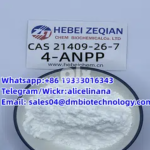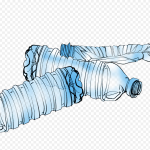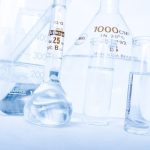Now that the political drama around gas stoves has waned, it's time to discuss the science. Here's what all the talking heads got wrong. Does secondhand weed smoke cause asthma? Maybe, though the most recent study cited as evidence isn't all that rigorous.
Chemicals & Chemistry
Thanks largely to the press and some radical environmental groups most people are terrified of chemicals because they can give us cancer. Almost all of these scares are bogus, but one that isn't is a beloved chemical – alcohol. Unlike a diet soda, a glass of alcohol poses a legitimate risk.
4-ANPP is not a term that most of you know but it's hugely important. It is the chemical that is the precursor to fentanyl. Although 4-ANPP is not an opioid, there is not a single thing anyone would do with it except convert it to fentanyl. And there is plenty of 4-ANPP to be had now the bad guys use synthetic organic chemistry to make it.
Heavy metals in baby food do not cause autism. Listen in as we discuss the evidence. Dropping an F-bomb now and again might confer an important health benefit, according to recent research. Do we finally have a scientific justification for the use of colorful language?
Dreary, despondent headlines about pollution and climate change are the norm. But they are not painting an accurate picture. Many countries are making serious efforts to protect the environment. Human ingenuity is the ultimate resource. My latest over at BigThink.
What does formaldehyde in baby shampoo have to do with a recent recall of a specialized laundry detergent? The failure to appreciate the need for preservatives in consumer products.
Glycated hemoglobin, aka, Hb1Ac, is an important measure of diabetes risk. The name sounds daunting, but the chemistry that forms it is quite simple. Even ACSH scientists might be able to understand this Dreaded Chemistry Lesson From Hell. At least on a good day.
A ferocious debate ensued over Emily Oster's recent call in The Atlantic for COVID "amnesty." Everybody in the dispute is wrong. Should you drink Smart Water? Only if you're dumb, says our resident chemist.
The Environmental Protection Agency (EPA) is in the process of making a remarkable decision and one that will have repercussions throughout the US. Its proposed safe levels in water for the “forever” chemicals perfluorooctanoate (PFOA) and its sulfonic acid (PFOS) are at extraordinary odds with other national authorities.
The National Park Service issued a warning against licking the Sonoran desert toad - an act that most people would intuitively avoid. But the frog contains a powerful hallucinogen, which produces LSD-like effects that can dangerous. So if you’re traveling around the southwestern US better watch your tongue.
Thirty years ago, the Natural Resources Defense Council (NRDC) launched a PR campaign against a plant-growth regulator called Alar, effectively eliminating the use of the chemical in agriculture. What's the legacy of this infamous anti-chemical scare? The New York Times continues to attack good scientists on the say-so of environmental groups. The paper is trashing its credibility.
Meryl Streep, a proud Vassar grad, recently received a Distinguished Alumni Award from her alma mater. But rather than stress her stellar career as an actor, she discussed an earlier moment as a citizen-scientist. “Once you know how to search out and credit the facts around certain problems, you are called on by your conscience to act on them. The Vassar conscience rings a bell in your head; it’s a call to action in your heart.” The problem? Alar.










